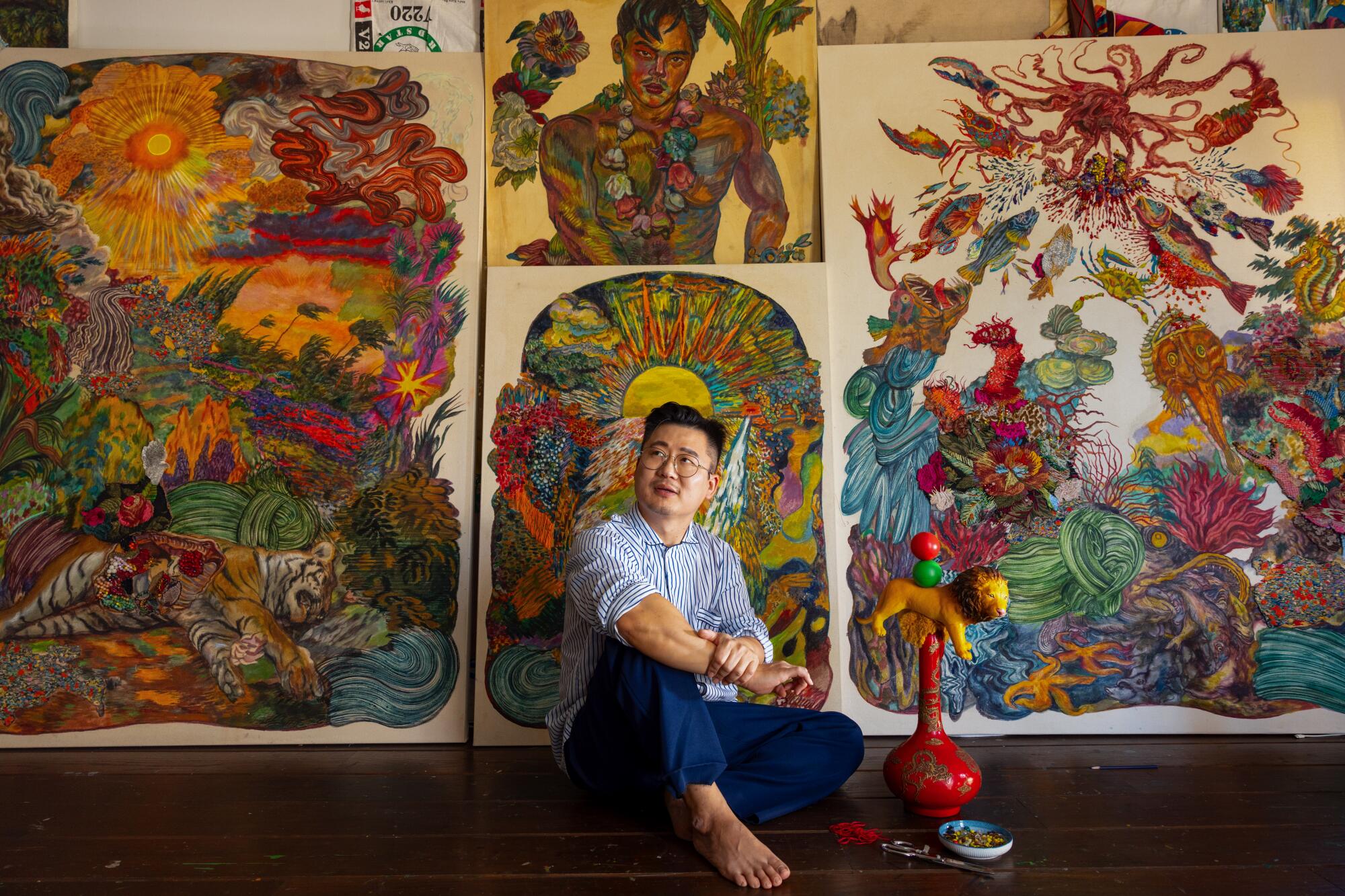
- Share via
Ken Gun Min is a daydreamer.
“I have one foot in reality and the other in fantasy,” the painter says as he sits on the floor of his Koreatown studio and sews beads onto a finished canvas. “I have a fantasy-oriented brain. I am constantly daydreaming and creating stories.”
Walking through his 1920 Spanish home and studio, which he shares with his partner of 22 years, you can’t resist being captivated by his stories, which he tells through the strokes of the Korean pearl pigments and Western oil paint he pairs with sparkling beads and crystals, appliqued textiles and shimmering silk embroidery thread.
Nearly everything in the house is Min’s creation, from the custom-built yarn cabinet in his embroidery room to the wry mixed media works sprinkled throughout the house. As he offers a tour, he points out Sebastian, a red lobster purse he sewed with textured fabric trim and embellished with beads and pearls. Painted canvases of all shapes and sizes line the floors, walls — and even the backs of doors. In Min’s world, painting and craft collide to tell deeply personal stories of queer identity and cultural assimilation in Los Angeles.

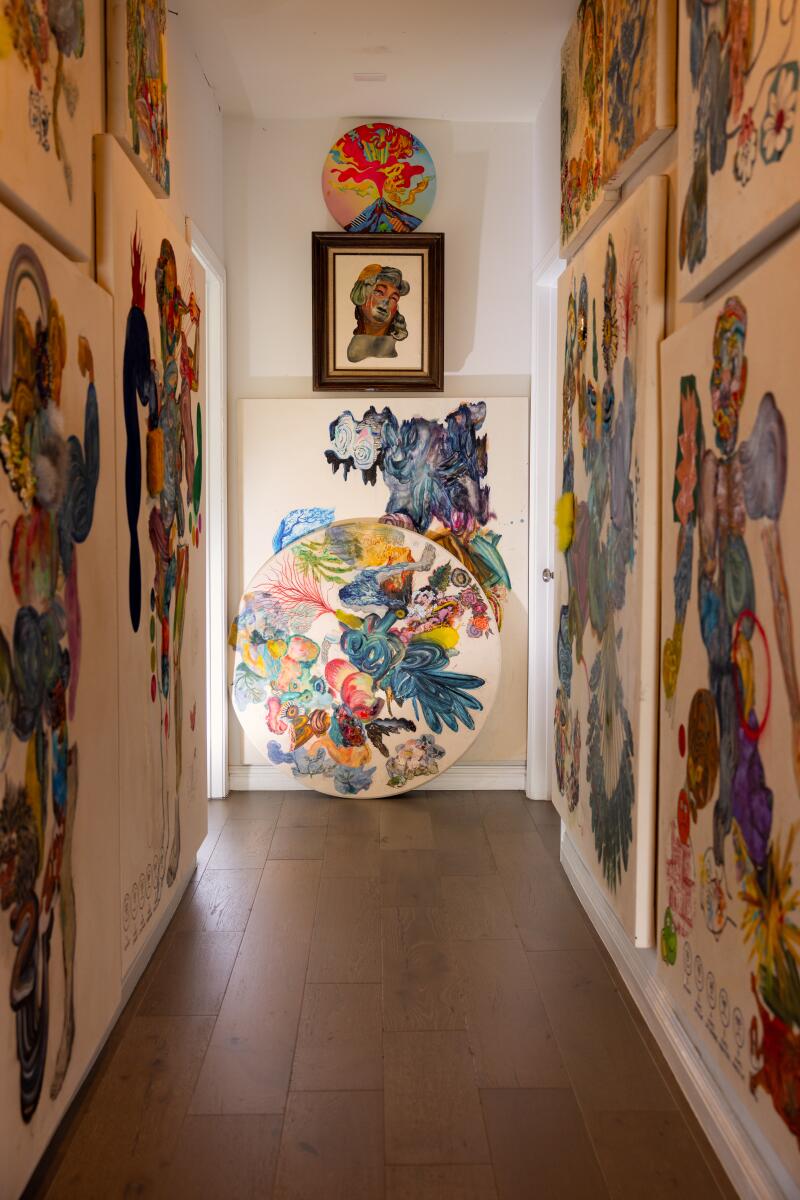
Paintings and textiles line the walls and floors of Ken Gun Min’s Koreatown home studio. (Jay L. Clendenin / Los Angeles Times)
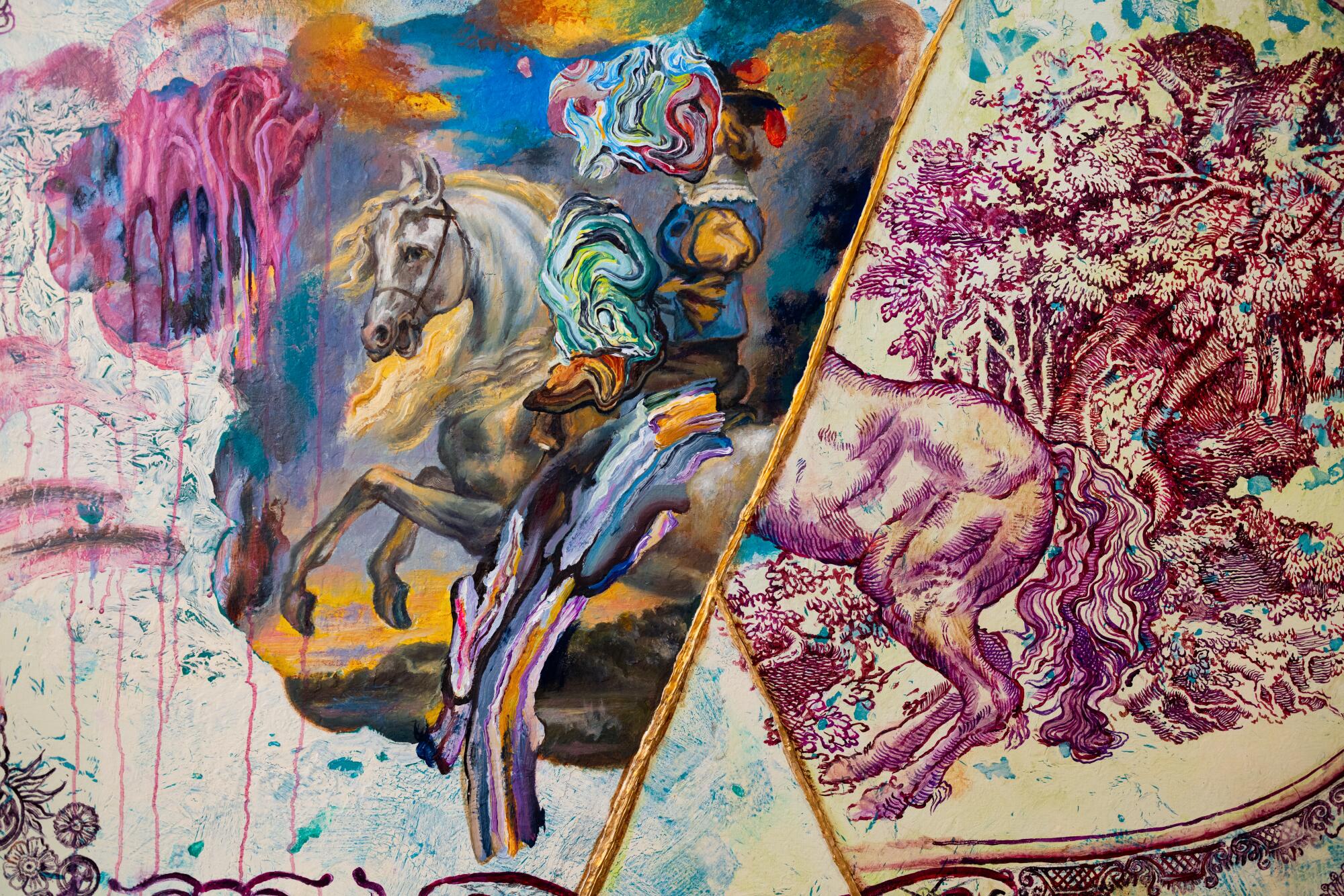
On the surface, the colorful landscapes and portraits he paints on the raw canvas he treats with gesso primer and Japanese bookbinding glue are a joyous experience.
But talk to Min and you’ll learn his stories are influenced by his perspective as a gay Asian first-generation immigrant from South Korea.
“It’s a facade,” he says of his paintings. “They are pretty, but their backstory is serious and dark. I’m interested in the repressed history of L.A. and the undocumented people who have been lost. I want people to get a chance to think about history and the time they are living in.”
In the embroidery room, “Night Watcher,” a mixed media piece from his 2022 show at K Contemporary in Denver, is built around Maggie Long, a 17-year-old teenager from Vietnam who was set on fire in a hate crime and burned alive in her family’s Bailey, Colo., home.
Min’s painful memories of practicing for the opening ceremonies of the 1988 Seoul Olympics — children collapsing on sweltering hot summer days — overlap with the death of the beloved mountain lion P-22 in his painting “1988- 2022.” “People in L.A. mourned the loss of wildlife in Los Feliz, and that reminded me of the tiger in Seoul [the official mascot of the 1988 Summer Olympic Games in Seoul],” Min says. “I wanted to create a bridge between Seoul and Los Angeles.”
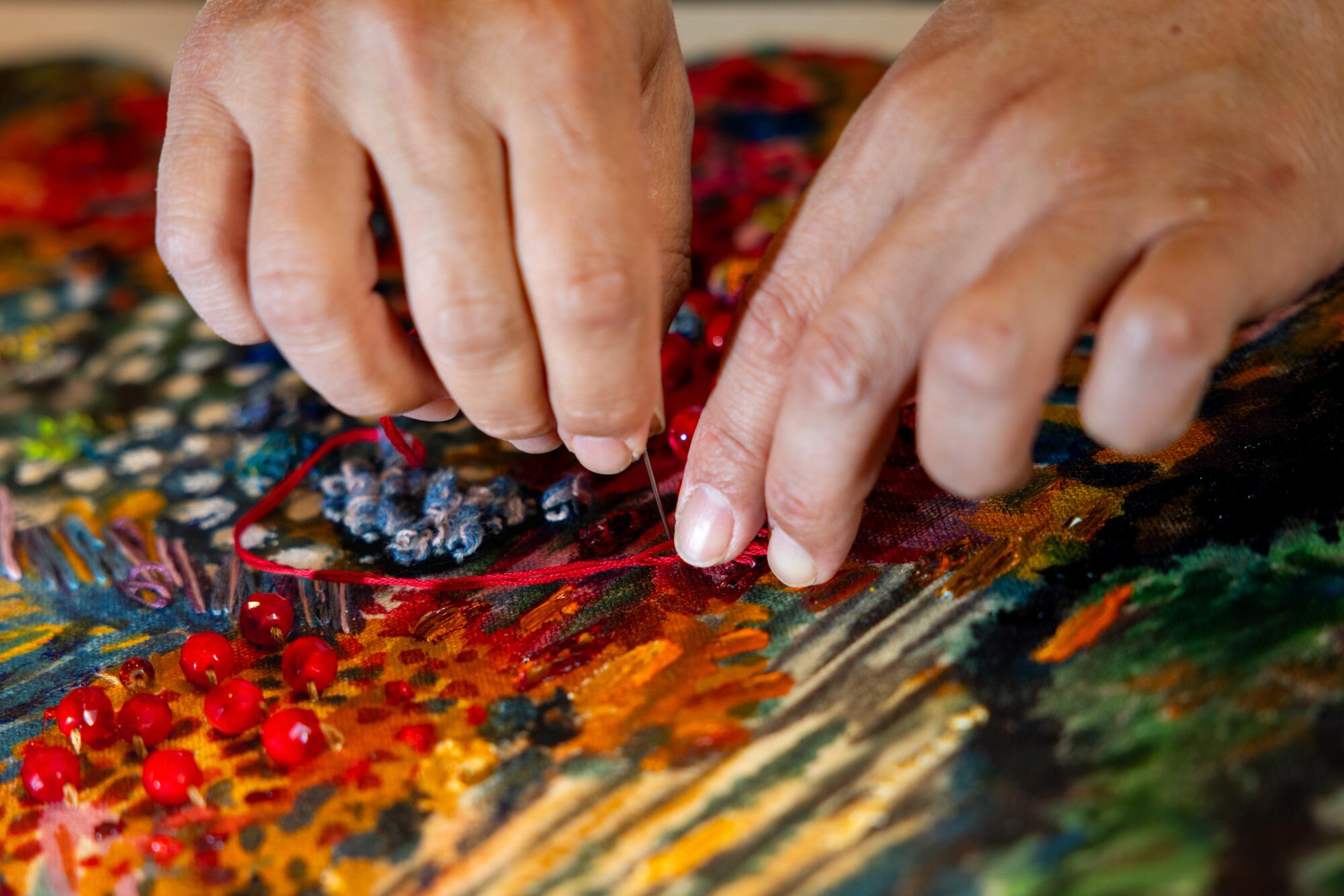
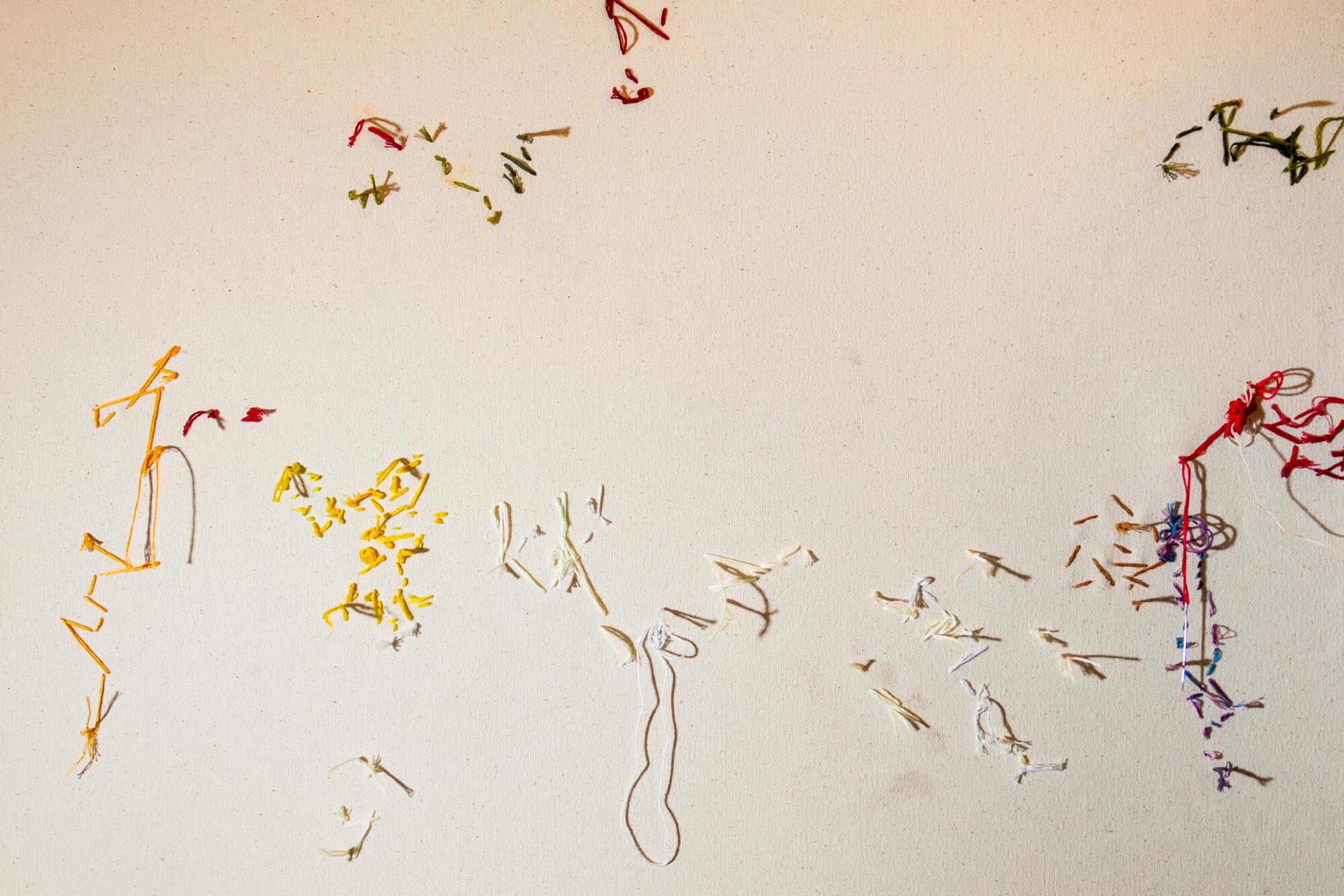
“His landscapes, which are inspired by real places in Los Angeles, are otherworldly, both sublime and a bit violent,” says dealer Seth Curcio, who represents Min at Shulamit Nazarian, Los Angeles. “To me, Ken’s work is so important because it merges real histories, invented places and people, and his own emotions — it tells a story of both celebration and tragedy that is often left quiet. His ideas are honest and boundless, and I think these qualities have allowed the work to quickly become celebrated by curators, artists, and collectors alike.”
His solo show “Sweet Discipline From Koreatown,” which opens Saturday at Shulamit Nazarian, is Min’s third exhibition exploring Los Angeles neighborhoods following Silver Lake Dog Park in 2022 and Westlake at the Chicago Expo this year.
Working from his life, Min is challenging the notion of traditional European portraiture painting.
“The Asian males in my show aren’t real people,” Min says. “But I’m telling a story through their portraits. They are showing vulnerable masculinity. Asian gay males are often perceived as submissive, less masculine and lacking testosterone. I’m challenging the notion of how the world has emasculated Asian males. There is a challenging and strong, sexy gaze in the Asian males I have painted, which you don’t often see in the contemporary art world.”
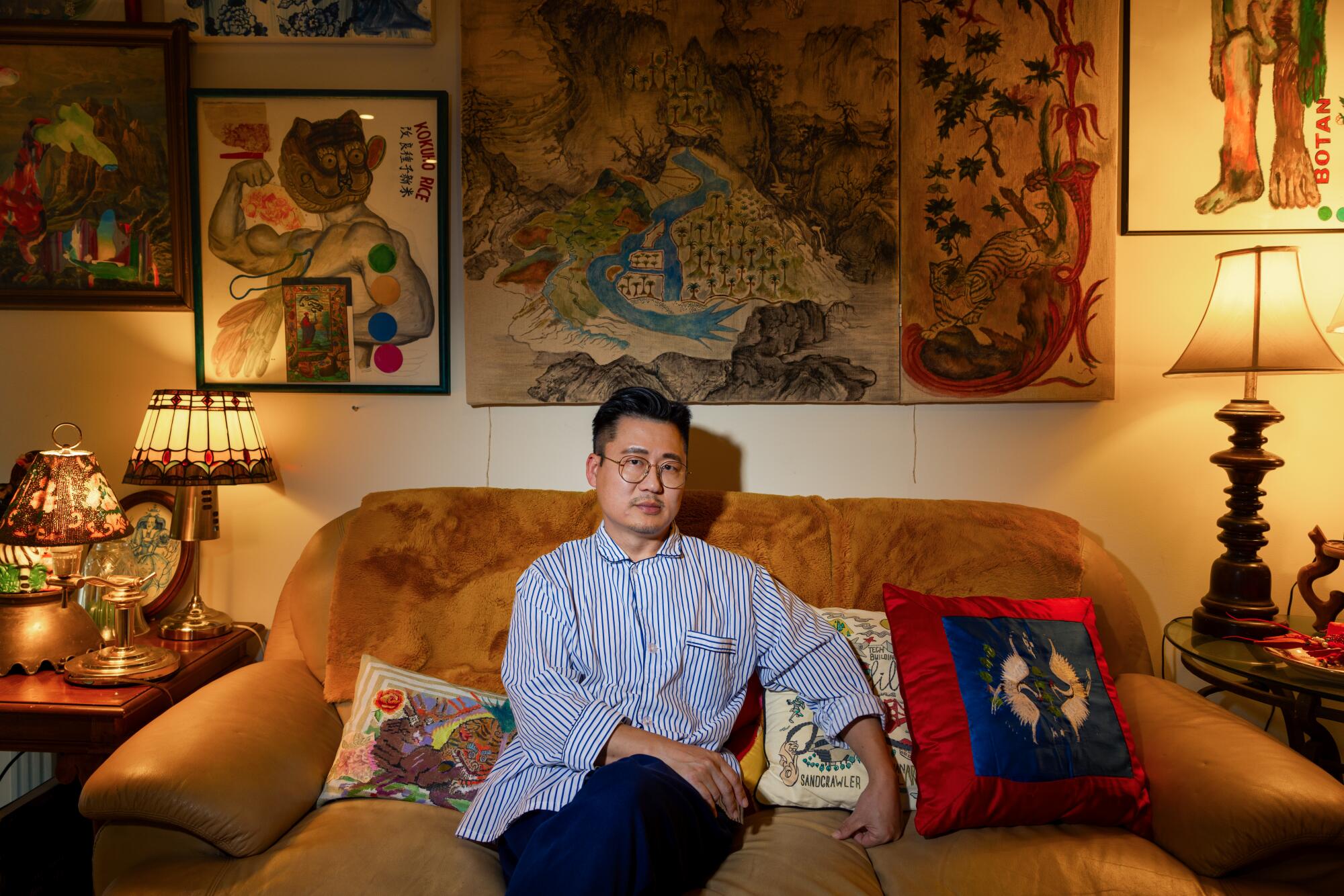
Min was born in Seoul and studied painting and art history at Hongik University. After graduating and completing his military service, Min relocated to San Francisco in 2001 “to explore the bigger world.” There, he received a master of fine arts in film production design at the Academy of Art University in San Francisco. “It was very affordable at that time,” he says with a smile.
After finishing his master’s, Min worked 10 years as a texture artist at Lucasfilm at Skywalker Ranch. “I developed texture, color, and some costumes for the Star Wars franchise,” he says. “I painted a lot of the skies and planets. Yoda’s skin, for example, is my creation.” Natalie Portman’s evening dress was another.
The artist says he chose a rigid, stable career, and not the independent life of an artist, to support his immigrant status. “You have to work hard to get a green card,” Min says. “My goal was that once I got my green card, I would quit my day job and focus on my art.”
When Disney acquired Lucasfilm in 2012, Min moved to L.A. to be closer to the art world and tried to make it as a painter. But no one took him seriously, he says. Following artist residences in Zurich and Berlin, he returned to Los Angeles in 2016 and drew the attention of Curcio, who visited his studio and invited him to have a solo show at his gallery.
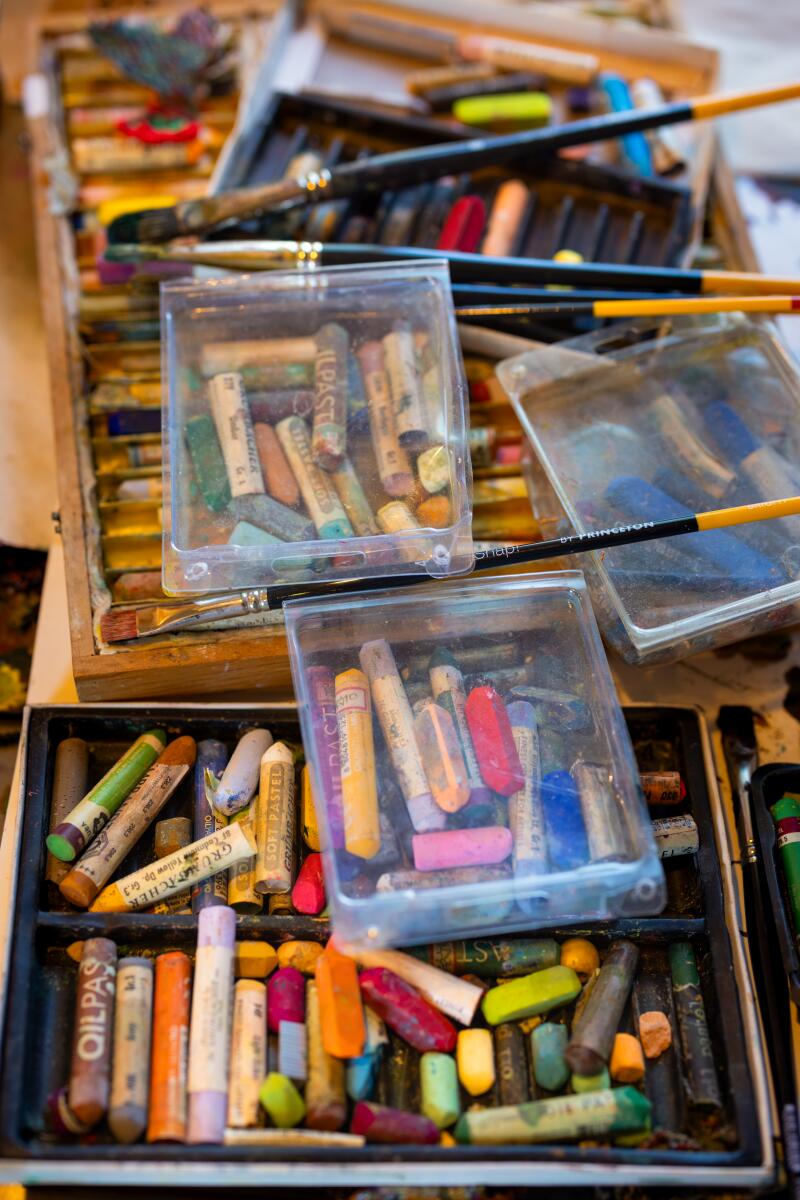
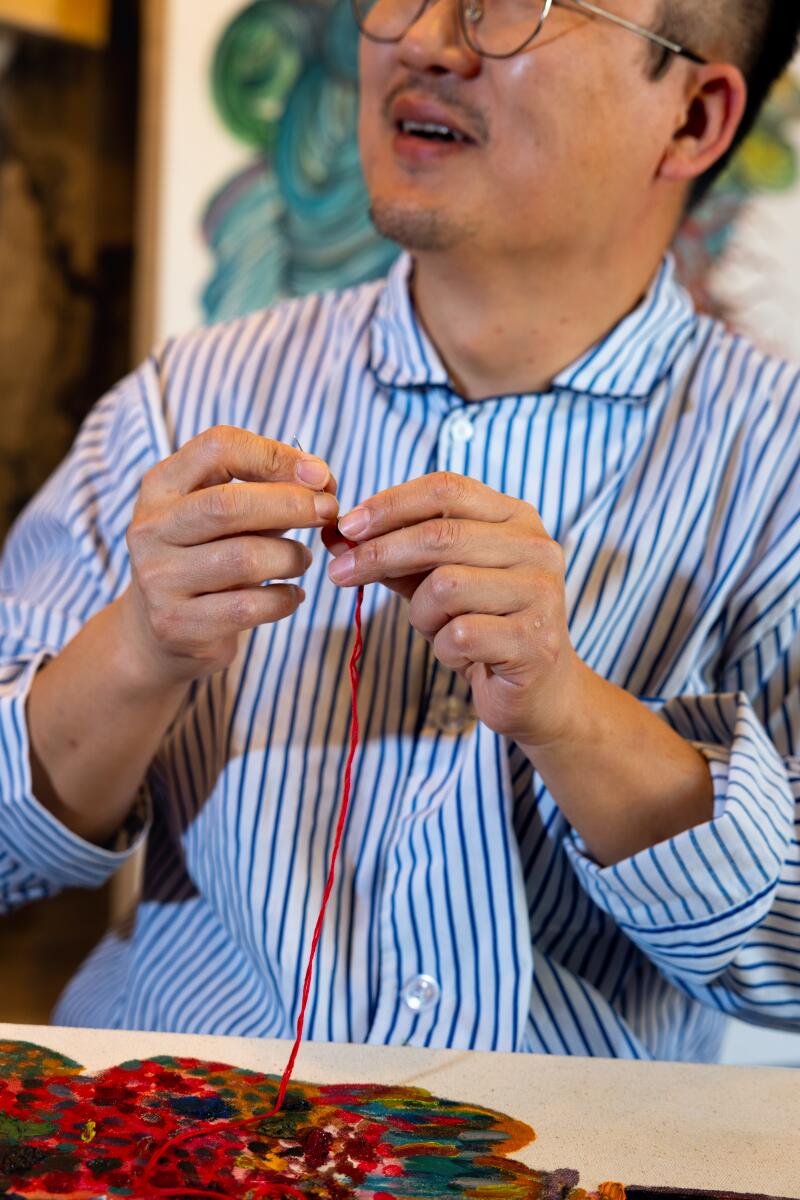
Artist Ken Gun Min uses a tiny needle to applique his canvases, which he treats with gesso and Japanese bookbinding glue. “It feels like rice paper,” he says. (Jay L. Clendenin / Los Angeles Times)

“His portraits, while not the likeness of a specific person, remain intimate and personal,” Curcio says. “And the surfaces of his paintings, which blend hand embroidery and beading with Korean pigments and oil paint, are rich, complicated and undeniably satisfying.”
In the wake of anti-Asian attacks following the COVID-19 pandemic, Min was moved to highlight the lives of immigrants who struggled to survive in a landscape that was constantly changing.
“Honestly, it didn’t hit me until the pandemic,” he continues. “I felt an urgency to share my perspective in a fresh way. We had been not in a good place, dealing with depression and isolation, and that gave me a lot of free time to explore the stories of L.A. I examined untold stories of the undocumented people who have been lost. That’s why I dig into neighborhoods: my new show is about identity and immigration and cultural mutation and assimilation.”
In “13 Missing Ladies,” Min deconstructed the dress of a drag queen he found at the Goodwill and reconstructed it using thread and fabric on his canvas. “I retold the story of the transgender women who were stabbed at MacArthur Park, just a few blocks down the street from my home,” he says. “That’s my direct connection between material and story.”
In 2017, he began incorporating beads and Korean fabric — including funeral shrouds — into his paintings, giving the flat canvases, which he likens to rice paper, a new dimension.
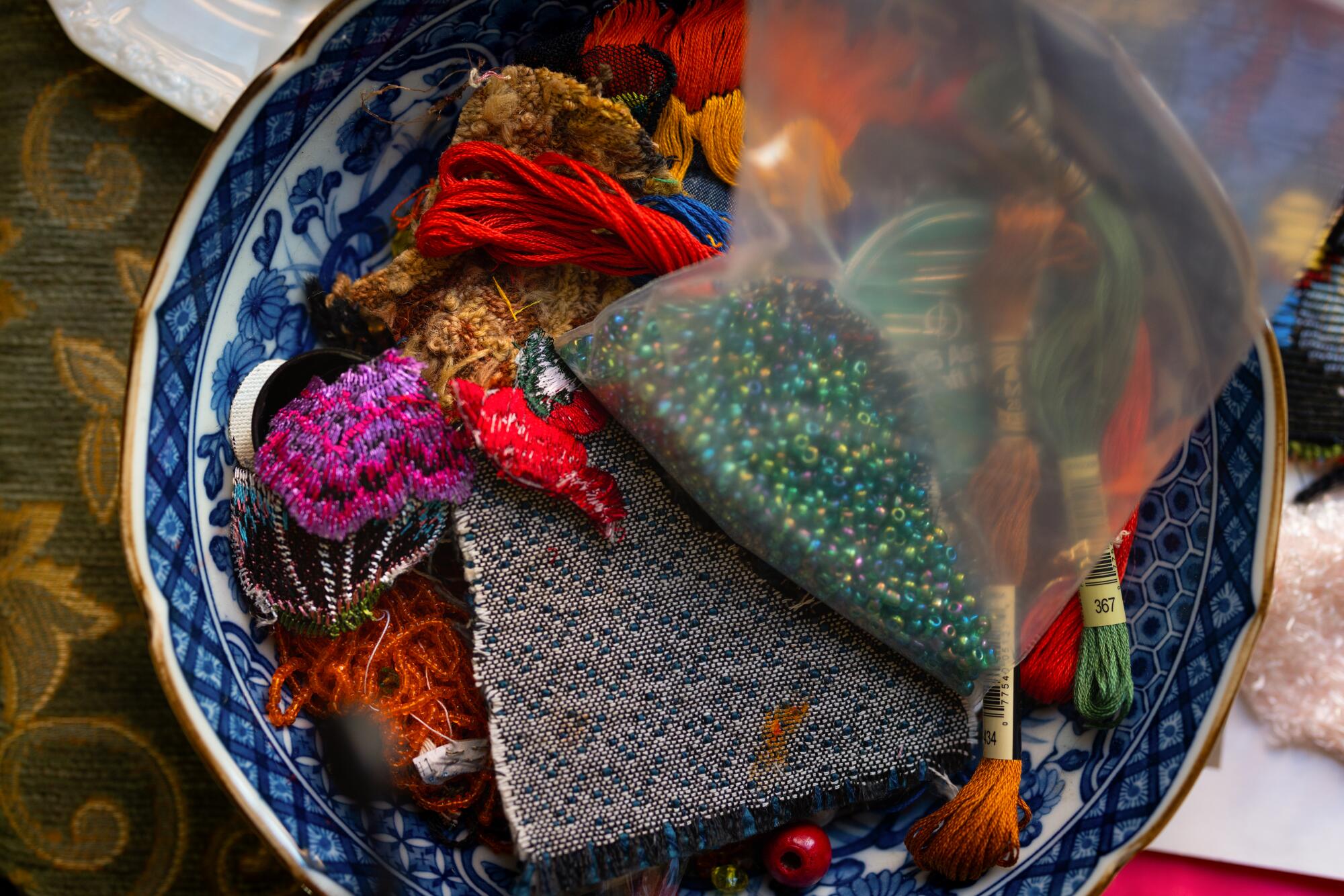
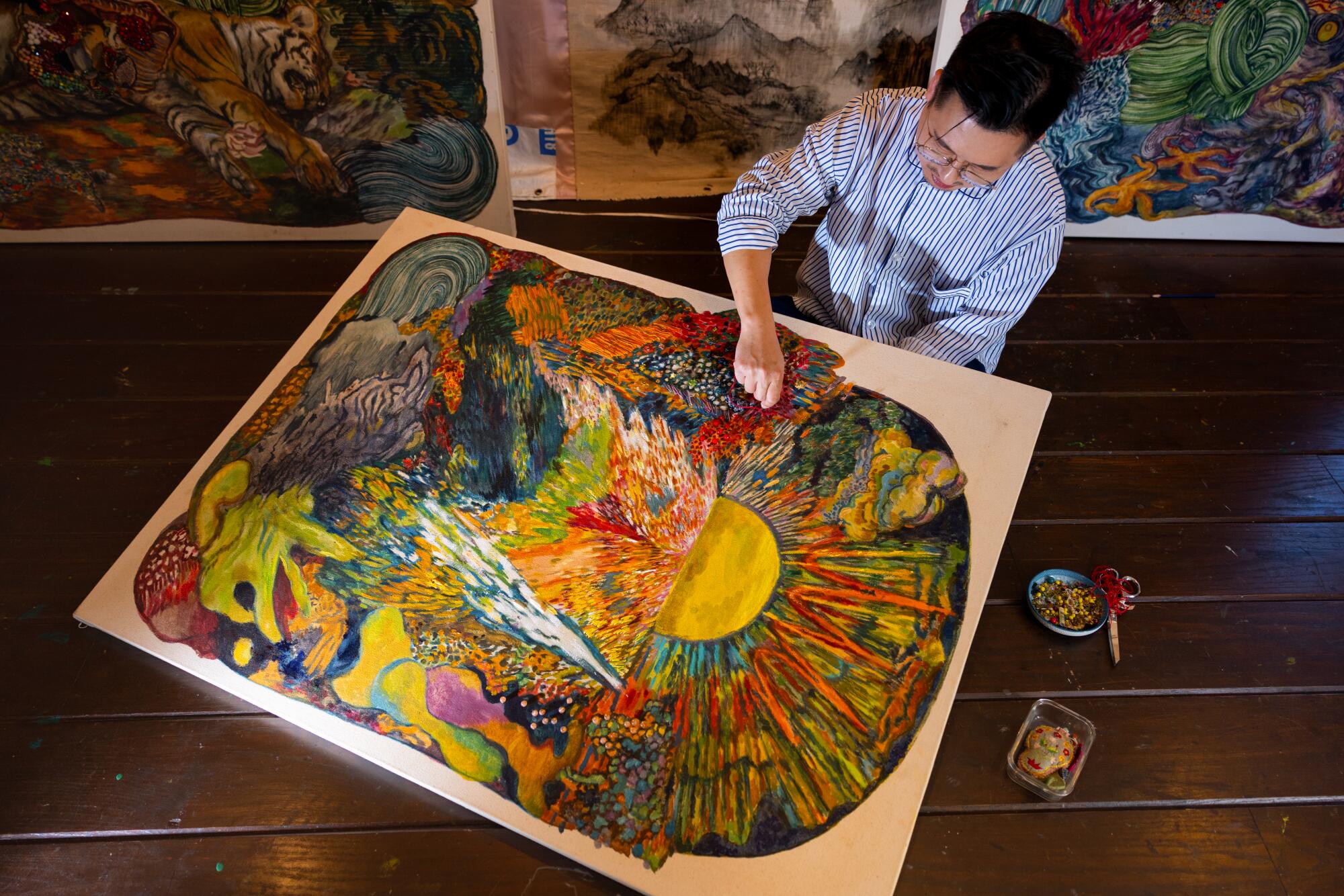
As he talks about the beads, which he inherited from a Glendale dollmaker, he notes that they are a connection to his grandmother, who taught him to sew and would often mend their neighbors’ clothing when he was growing up in Seoul.
Today, the beads and stitches tell the stories of the immigrants who can become anonymous in metropolitan cities like Los Angeles. “The thread is meaningful,” Min says as he points to the beads and embroidery embedded in a dissected P-22. “It covers and holds my paintings.”
When asked what he hopes viewers take away from his artworks, Min says another of his daydreams is that people from other cultures, especially in a melting pot like Los Angeles, will respect his narratives.
“So much of my work is about people misunderstanding each other and not even trying to know one another,” Min says. “It would be great to make an impact and make life a little better. And that might be in your own neighborhood.”
As Min continues to explore the neighborhoods of L.A., and their influence on our identity, it seems that not all of his daydreams are dark.
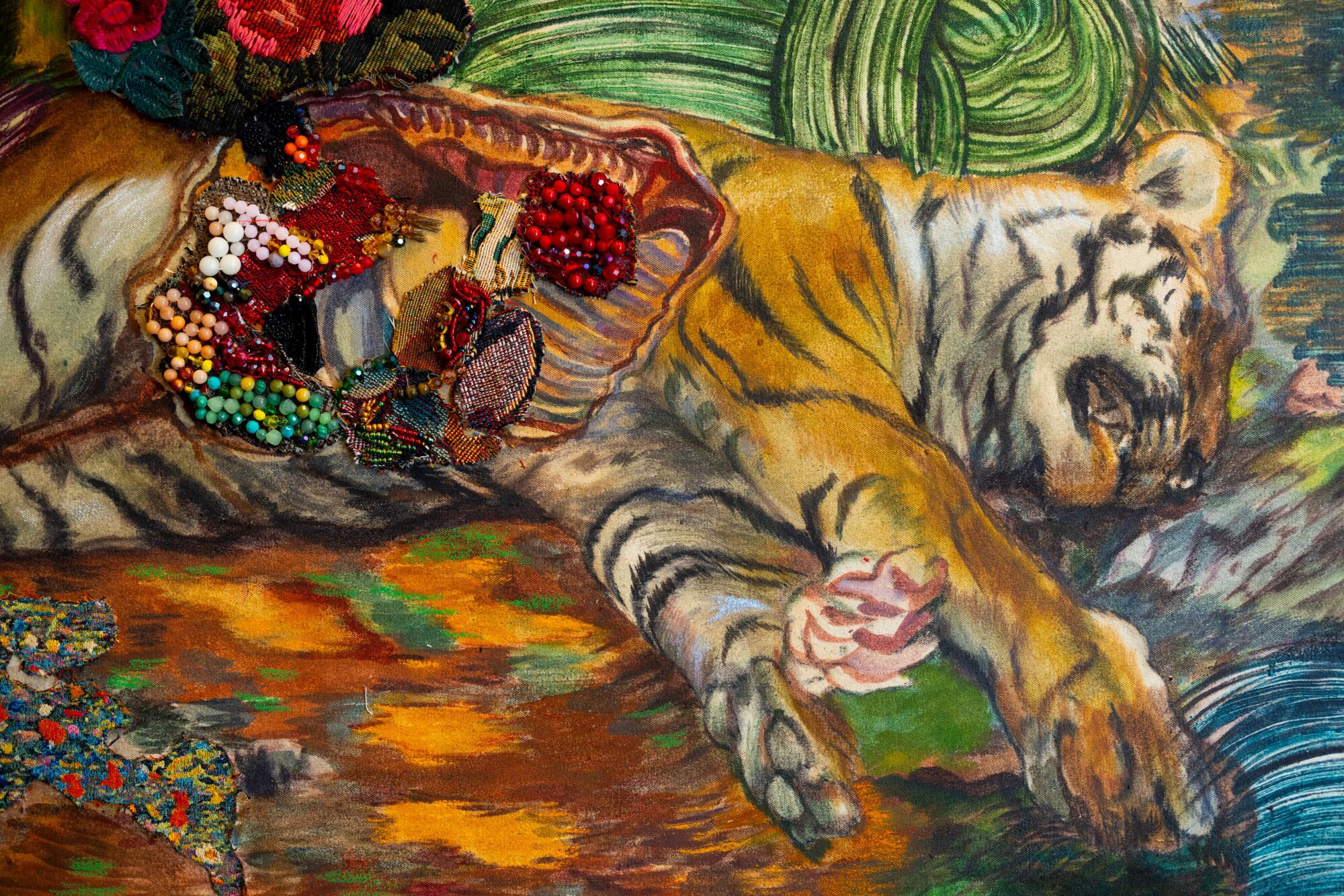
“Ken Gun Min: Sweet Discipline From Koreatown.” Nov. 11-Dec. 20. Opens Nov. 11, 6 to 8 p.m. Shulamit Nazarian, Los Angeles, 616 N. La Brea Ave., Los Angeles. shulamitnazarian
More to Read
Sign up for The Wild
We’ll help you find the best places to hike, bike and run, as well as the perfect silent spots for meditation and yoga.
You may occasionally receive promotional content from the Los Angeles Times.












